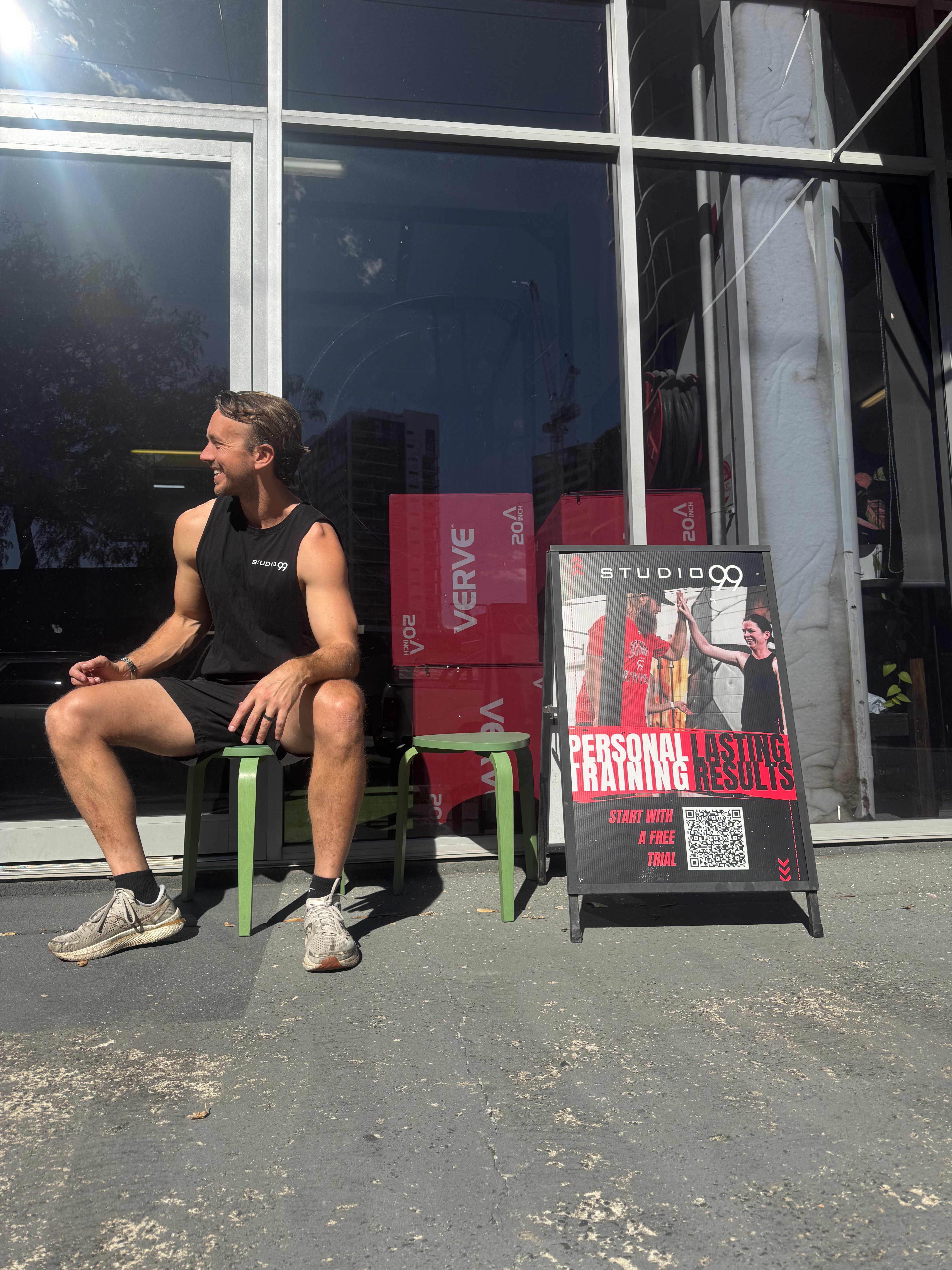How to Build a Balanced Plate for Your Fitness Success: Considerations for Improving Muscle Mass and Reducing Body Fat
- Tim Douge

- Feb 13
- 3 min read
In your journey toward fitness success, knowing how to build a balanced plate is essential. Whether you're in your 20s just starting out or in your 60s trying to maintain health, a solid nutrition strategy can help improve muscle mass and reduce body fat percentage. This post highlights key dietary considerations for different age groups, aiming to help you make informed choices that align with your fitness goals.
Understanding Your Nutritional Needs
When you engage in regular training, your body needs a specific mix of macronutrients—proteins, carbohydrates, and fats. The Dietary Guidelines for Australians emphasize that a balanced plate includes not just the right ratios of these nutrients, but also the quality of the foods you select.
Protein is crucial for anyone looking to boost muscle mass. The Australian Institute of Sport recommends individuals engaged in regular physical activity consume about 1.2 to 2.0 grams of protein per kilogram of body weight. For example, a 70 kg active person should aim for 84 to 140 grams of protein daily. This recommendation varies based on training intensity and frequency.
Carbohydrates serve as your primary energy source, especially for high-intensity workouts. Focusing on complex carbohydrates such as brown rice, quinoa, legumes, fruits, and vegetables can provide sustained energy along with essential vitamins and minerals.
Fats, especially healthy fats from sources like avocados, nuts, and olive oil, are vital for hormone production and overall health. Aim for a balanced intake to support long-term wellness.
Building a Balanced Plate by Age Group
Ages 20-30: Fueling for Performance
Young adults often have higher energy and metabolic rates. During this time, you should focus on high-quality foods that support both muscle growth and energy levels.
Your plate might include:
Lean protein sources such as chicken, fish, or plant-based proteins like lentils.
A generous serving of whole grains, like brown rice or quinoa.
Colorful vegetables that provide not just nutrients but also antioxidants, facilitating overall health.

Ages 31-40: Maintaining Energy and Muscle
In your 30s, your metabolism begins to slow, making it important to be mindful of portion sizes while still prioritizing protein intake. Whole-food sources are key, focusing on maintaining body composition.
Incorporate strength training into your routine, coupled with moderate carbohydrates for energy. Aim to include:
Fish rich in omega-3s or lean meat for protein.
Nuts or seeds to add healthy fats essential for satiety and nutrient absorption.
Ages 41-50: Focus on Healing and Recovery
As you enter your 40s, recovery becomes increasingly important. Nutrition can significantly influence recovery from workouts and help maintain lean muscle.
Focus on incorporating:
Omega-3 fatty acids from fish, flaxseeds, or walnuts.
Complex carbohydrates that help replenish glycogen stores post-workout.
Maintain consistent protein intake from both animal and plant sources to support muscle repair.
Ages 51-60: Prioritizing Nutrient Density
Individuals in this group may need fewer calories, but improving nutrient density becomes essential. Focus on vitamins and minerals critical for health.
Your balanced plate should highlight:
Foods rich in calcium and vitamin D for bone health, such as dairy products, leafy greens, and fortified foods.
High-fiber foods like legumes and whole grains to facilitate digestive health and increase fullness.
Hydration: A Key Component
Regardless of your age, staying properly hydrated is vital for optimal performance and recovery. Dehydration can hurt your performance and recovery speed, so drink water with every meal and after workouts.
Generally, water suffices; however, if you're engaged in intense training, consider electrolyte-rich beverages to help replenish lost minerals.
Special Considerations: Dietary Restrictions
In today’s fitness world, many people have dietary restrictions, whether vegetarianism, veganism, or gluten intolerance. It is vital to create a balanced plate that respects these choices while providing the necessary nutrients for performance and recovery.
For example:
Vegetarians and Vegans: Include diverse protein sources like tofu, tempeh, lentils, and a variety of whole grains and vegetables to meet nutritional needs.
Gluten-Intolerant: Opt for gluten-free grains like quinoa, rice, and oats, and ensure your plate contains high-quality protein and adequate fiber.
Your Path to Fitness Success
Building a balanced plate focused on your fitness goals is an ongoing process requiring attention and knowledge of your dietary needs.
By understanding your macronutrient requirements and tailoring your meals to your age group, you can create dishes that support muscle mass gains and body composition improvements while enhancing your overall health.
Remember, a balanced plate isn’t just about ratios; it involves quality food choices that keep your energy levels up and assist in recovery. Embracing informed dietary choices can significantly enhance your fitness journey—harness the power of nutrition and set yourself on the path to your goals.
Stay tuned to our newsletter for our recipe of the week!


Comments